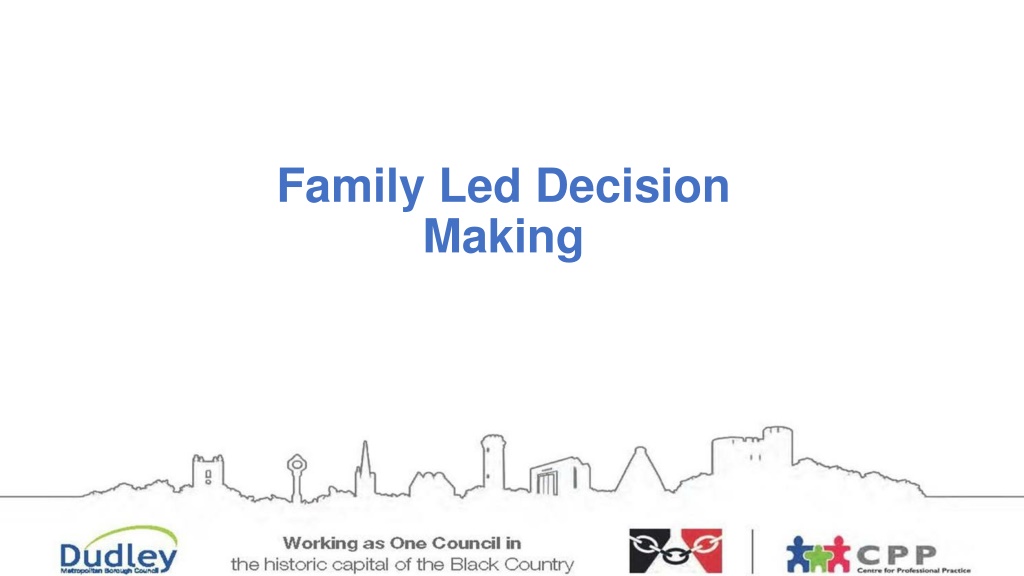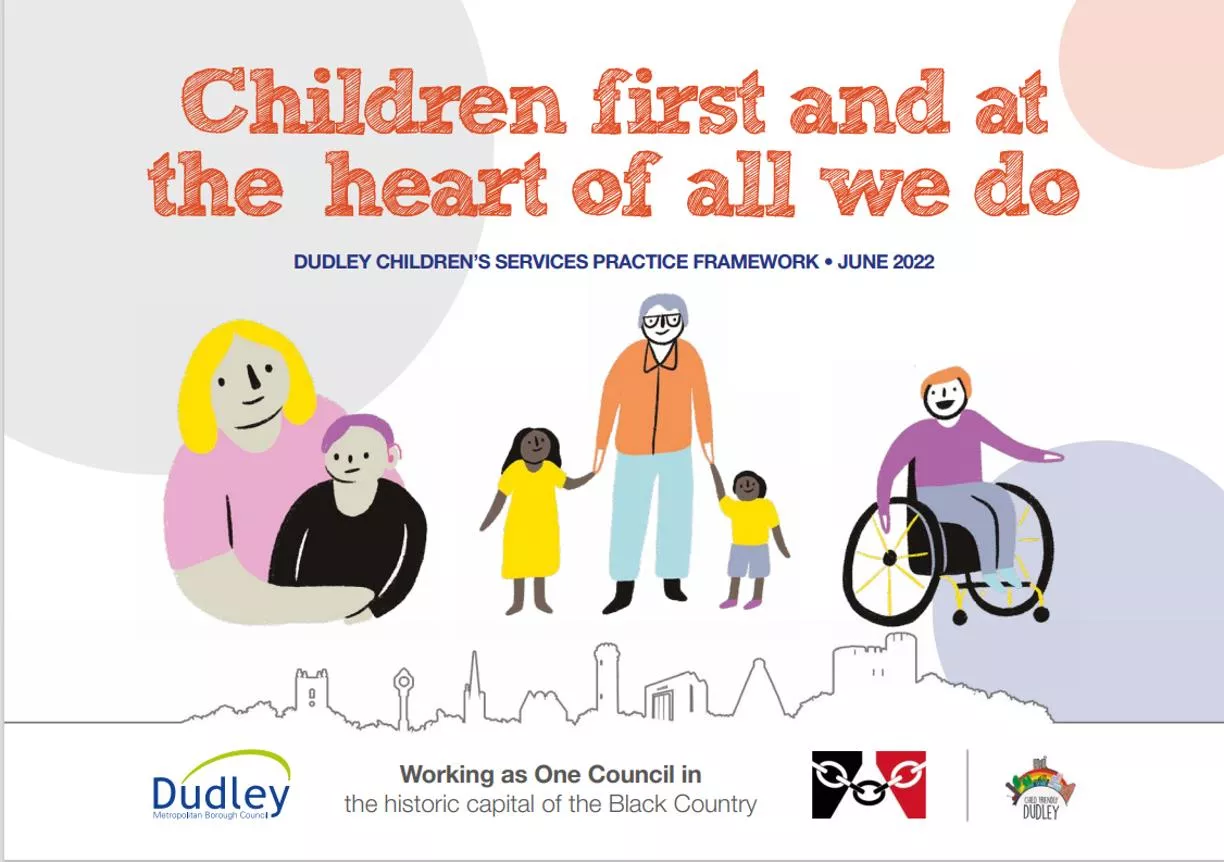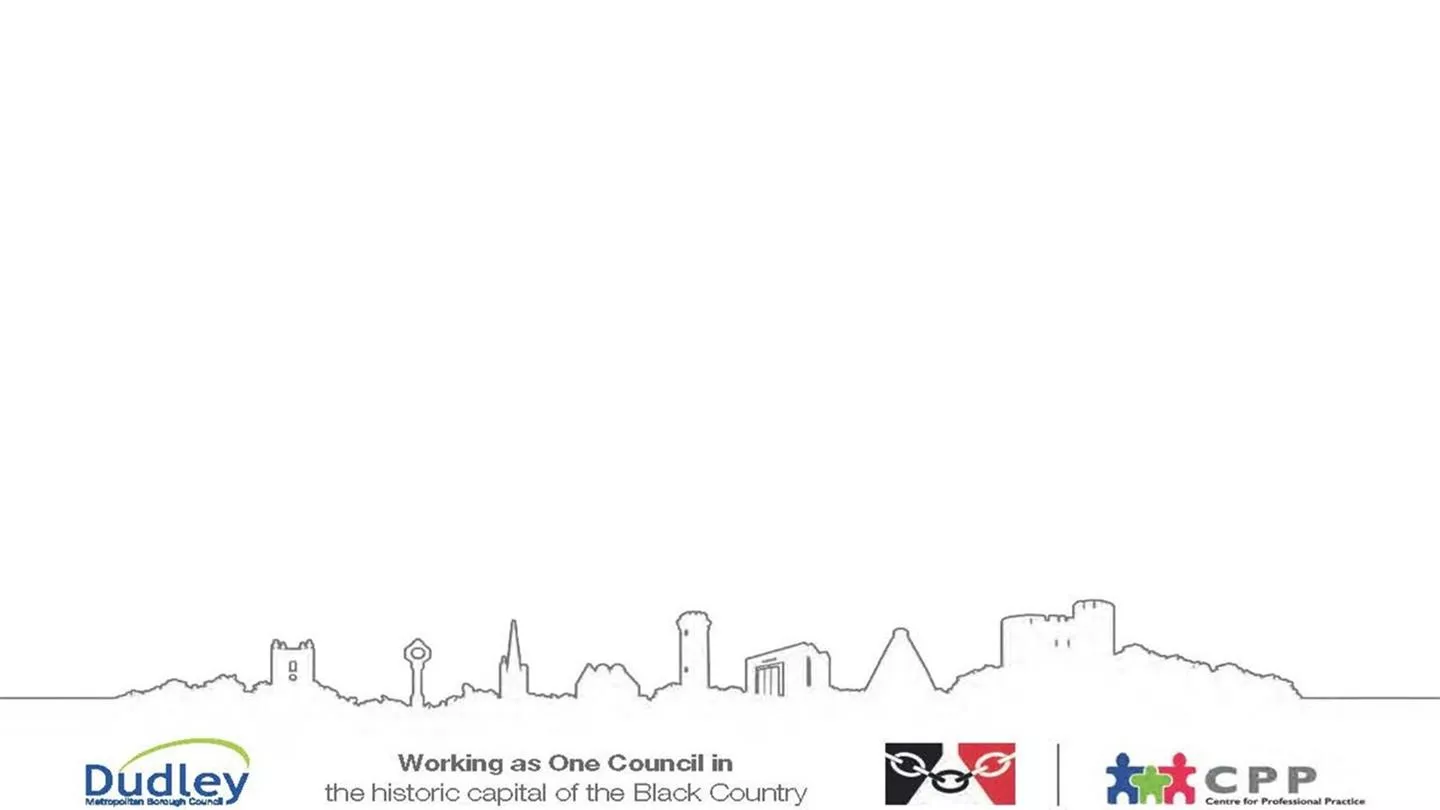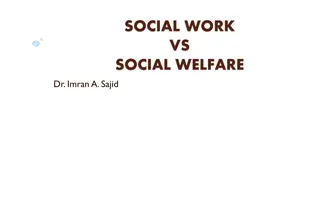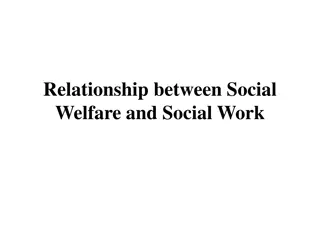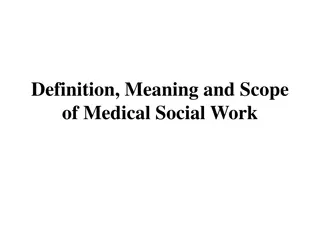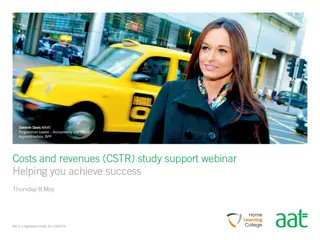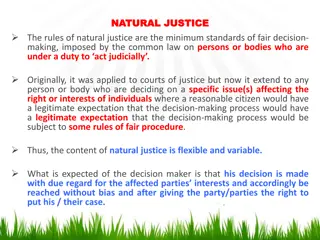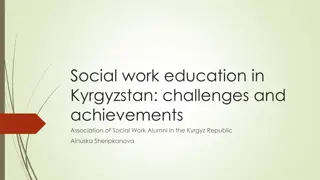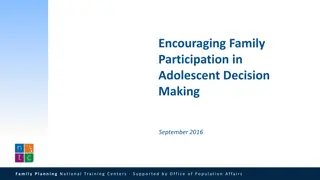Understanding Family-Led Decision Making in Social Work
Family-Led Decision Making involves engaging families in making decisions about children, addressing safety concerns collaboratively, and forming alternative plans. While research highlights the importance of family involvement in decision-making, negative experiences are reported. A strengths-based approach recognizes the strengths and resources within families, promoting positive change compared to deficit-based approaches.
Download Presentation

Please find below an Image/Link to download the presentation.
The content on the website is provided AS IS for your information and personal use only. It may not be sold, licensed, or shared on other websites without obtaining consent from the author. Download presentation by click this link. If you encounter any issues during the download, it is possible that the publisher has removed the file from their server.
E N D
Presentation Transcript
Family Led Decision Making
Family Led Decision Making Family Led Decision Making refers to the engagement and involvement of families in decision making about children. Family making process where a child's family collaboratively identify and address safety concerns, with the intent of forming alternative plans to ongoing intervention. led decision making aims to provide an inclusive decision Research has found that at an ideological level, families involvement in social work decision making is felt to be important but families still report negative experiences and do not feel involved.
Defining Families - Online Cambridge Dictionary A group of people who are related to each other, such as a mother, a father, and their children: A social group of parents, children and sometimes grandparents, uncles, aunts and others who are related: Does this definition help us? Why?
Breakout - Family, Friends & Community 1. Write down what you think constitutes a family in modern society and who decides this? 2. Write down a list of who is your family? e.g Mother, Father etc. 3. List 5 famous families you know of.
Family, Friends & Community Who knows your child or children in your family best? How much time do they spend with family? Who best knows the children of the families you are working with? How often do you visit a family? How long do you stay? Who should say what needs to change for a child? Whose plan should it be?
A strengths-based approach operates on the assumption that all people, even if they are experiencing problems, have some strengths and resources from which they can draw on to make positive change. A deficit-based approach, which focuses on what is wrong, can overlook valuable skills and experiences a family has. It can also reduce a family s motivation to actively engage with services and impair the likelihood of positive change for children - NSW Interagency Guidelines, 2012
Social Discipline Window To With Adapted from: Wachtel T & McCold P in Strang H & Braithwaite J (eds), (2001), Restorative Justice and Civil Society, Cambridge University Press, Cambridge Challenge Not For Support
The With Mind Set Curious/Questioning Open minded Respectful Reflective Challenging Honest, difficult? Solution Focused Emotionally Literate Patient Supportive
Family Conversations Every family tells stories, multiple perspectives and truths exist. As stories emerge these represent the family s definition of itself values and collective identity. Family stories are recursive in that they influence how lives move into the future. (White and Epston) But - if stories give an account of past actions how does the family know how to go on in the future?
What is the Story? Unique to the circumstances and individuals involved Different members may have different interpretations Provides a firm basis for analysis. Write in a language they can understand Helping a family and a child to tell their story can be a therapeutic process. Don't add anything that hasn't been discussed.
Understanding Who Families Are Being inclusive and involving parents, extended family, kin and friends (where appropriate and relevant) as well as recognising and considering the role of the broader community, understanding the child s position in the family in relation to other family members
Ecomaps An ecomap provides a quick and easy way of illustrating family support and links it assembles already gathered information that can be related to assessment and care planning. The ecomap is a visual display of the informal and formal systems in the child's network (ecology), a genogram is a tool for creating a visual display of the child's family tree (McGoldrick & Gerson, 1985). ....Both can be used to understand accurately depict the family and its environment at one point in time
Using Eco Maps - Eco Maps give workers a comprehensive picture of: Family dynamics - relationships that are nurturing or conflictual; Each individual family members connections to social support systems. For example: housing support, income support, counselling, justice programs etc and the quality of these connections; The whole family unit's level of connectedness to the external world; Areas of service duplication. Each individual family members connections to their community. For example: significant friends, neighbours, sports clubs, spiritual influences - and the quality of these connections;
Drawing an Ecomap The child is placed at the centre of the ecomap and every person and organisation that forms a part of the child s network should be named and placed within a circle. It is vital that links are drawn between the child and people/organisations to highlight connections use different types of lines to indicate the nature of the link or relationship.
What is a Genogram? A genogram is a picture of a person s family relationships and history. It goes beyond a traditional family tree allowing the creators to visualize patterns and psychological factors that affect relationships.
Using Genograms; We can use them for: - Connecting with the family. - As a database/aide-memoire for ourselves. - Broadening the context of the work. - In practice discussions and supervision - A way of engaging adults & children. - To identify what we don t know and understand. - Exploring patterns, beliefs, family structure, family lifecycle and culture...
Cultural Genograms #1 Extension of process of doing a genogram Help us to build relationships, gather information, be aware and practice is culturally competent. Family background, what relationships are like, people s generational experiences of being a child and being parented. Understanding how a family functions, connection of individuals and relationships, to understand current challenges or behavior.
Cultural Genograms #2 Powerful tool for understanding family relationships, patterns, stories and perspectives. Becomes a family s own representation of their lives, and helps family members to understand these things better
Social GGGRRRAAACCCEEESSS Family stories are linked to and follow Gender, Geography, Gender Identity Race, Religion Education, Economies, Employment Age, Ability, Appearance Sexuality, Sexual Orientation, Spirituality Culture, Class, Colour
Family Meetings The decision makers at Family Meetings are the family and their networks, not the professionals. Families have the strongest potential and motivation to care for their own children; Families provide identity and continuity for their children's future. Families have more knowledge about themselves than professionals, which can lead them to make better decisions. Families can make culturally sensitive plans. Families are able to make good decisions about their children, provided they are given the opportunity and information to do so. Children are generally best looked after by their own families.
When? Family meetings should be held on a routine and frequent basis to collaborate with families and support their participation in planning for children. Examples of circumstances where a family meeting might be needed are, but not limited to: Where families are working with Children's Services on a CIN basis and there is agreement and good communication within the family network. Where families are working with Children s Services in regard to concerns related to child protection planning Where an urgent family decision is required to prevent a child becoming accommodated or looked after and family members are able to meet at short notice; Where an urgent family meeting is required to secure a child's accommodation, safety or welfare, where family members are able to meet at short notice to make decisions/plans;
When Not To Do a Family Meeting. There are some occasions that Family Meetings may not be appropriate for example if a family are fleeing so called honour-based violence or in situations where there are concerns of Interfamilial sexual abuse. There is also a need to be clear about things that cannot be included in the plan for the child to be kept safe (for example the child cannot be in the same household as someone who is alleged to have harmed them).
Professional Talks - Opening the meeting, introductions. Ground Rules Professional sets the focus, check everyone understands Introduction (Professional Led) Professional asks questions - people in family network express thier prespective thoughts and feelings. Story Telling Professional asks questions - people in family network express thier understnading about who has been affected and how they have been affected. (Family Led) Professional Talks - Check everyone's understanding, supporting people to take responsibility. Reflection (Professional Led) Professional asks questions - people in family network express thier prespective thoughts and feelings. Planning Professional asks questions supporting others to take responsibly for solutions and the plan. (Family Led) Review what has been discussed with everyone Summary and Close (Professional Led)
Family Group Conference A principle of FGC is that families are asked to help develop their own solutions. This way of working acknowledges that families know themselves better than anyone else. Family members are encouraged to support each other and are enabled to take back responsibility for themselves helping to address families feelings that statutory services make decisions for families rather than together with them
Family Group Conference An independent FGC Coordinator works to bring the extended family together to explore issues affecting the child and support family members to find their own resolutions to keep the child safe, healthy and happy
Family Group Conference Families that were labelled hard to reach or hard to engage with social work services and see an improvement in children s quality of life outcomes through the use of FGC. FGC can help to address a perceived imbalance of power between the family and statutory services Family members feeling that they understand what is happening, are prepared for meetings and are empowered and included in decisions that affect them can be as important as their longer-term quality of life outcomes. enhanced understanding of why families find themselves in a particular situation
